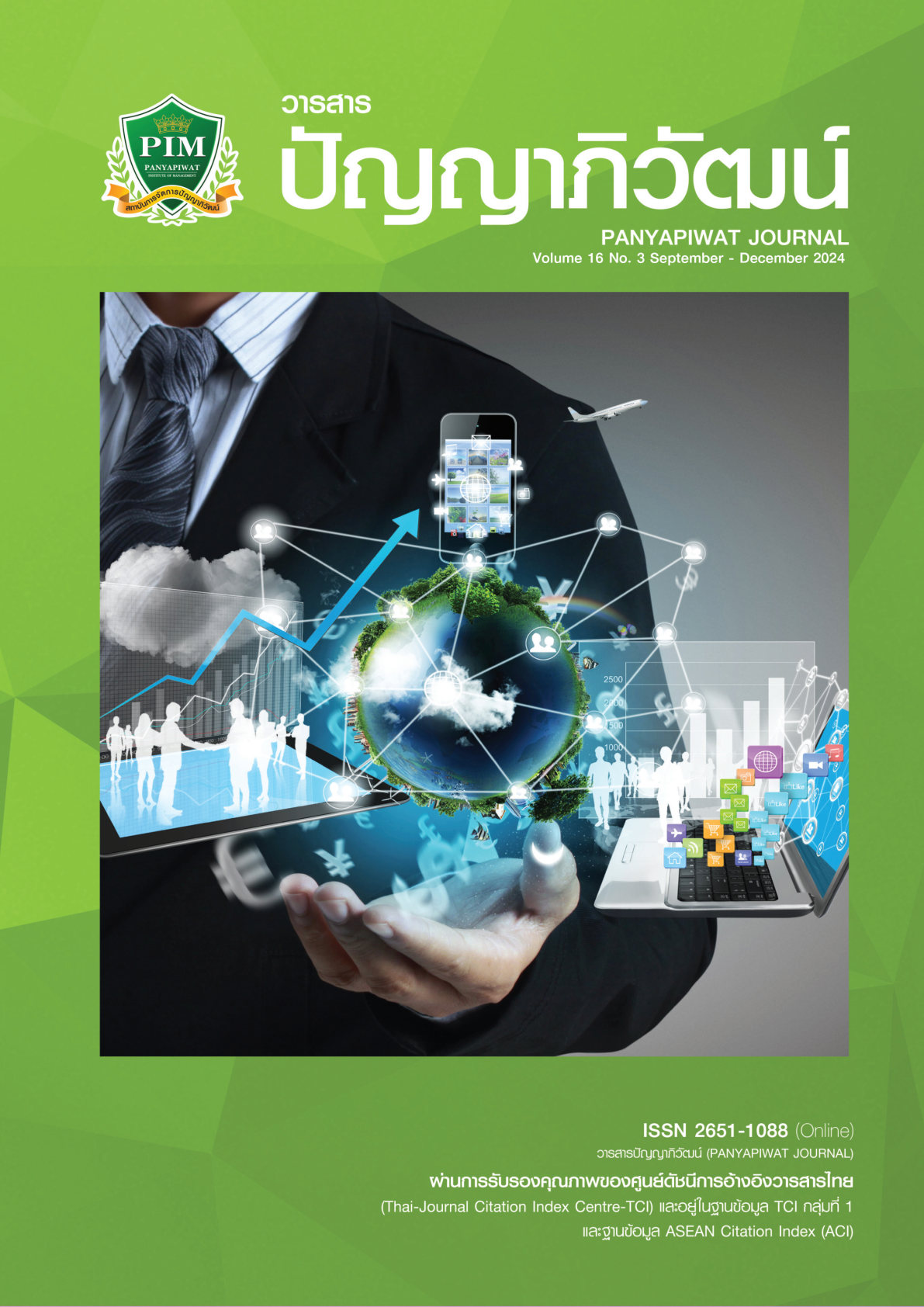CONSTRUCTING THE MEANING OF CHICKEN CONSUMPTION FOR THAI SOCIETY FROM KFC CHINESE NEW YEAR ADVERTISING CAMPAIGN POSTER ON FACEBOOK
Main Article Content
Abstract
The objective of this research article is to study the meaning of chicken consumption in Thai society from KFC advertising campaign posters for Chinese New Year on Facebook platform. This work is a qualitative research by studying the text of 7 posters from KFC Thailand’s Chinese New Year campaign from 2018 - 2024, published on the KFC Thailand Facebook page. The researcher used the concept of Science, the concept of globalization, and the concept of Chinese New Year to serve as lenses to explain the phenomenon. The results of the research have revealed that product manufacturers create meaning for chicken consumption through poster media during the Chinese New Year festival using communication and meaning-making strategies that combine the uniqueness of a global brand with the values shared by Thai-Chinese people. Adhering to key strategy for creating meaning involves using elements of KFC’s core brand identity combining a set of meanings from traditional Chinese traditions and the use of Thai-Chinese teenage actors. KFC’s Chinese New Year advertisement is an example of the idea of combining the global and the local (Globalization). KFC adjusts global brand elements to suit the context of local culture in a balanced way. The set of meanings that manufacturers choose to create symbolic products is a cultural blend of internationalism and Chineseness. As for the Thainess that appears, there is only a small amount. The use of symbols in advertising allows producers to create new meanings that reflect the values and beliefs of local target groups, and those meanings encourage continued consumption.
Article Details

This work is licensed under a Creative Commons Attribution-NonCommercial-NoDerivatives 4.0 International License.
I and co-author(s) certify that articles of this proposal had not yet been published and is not in the process of publication in journals or other published sources. I and co-author accept the rules of the manuscript consideration. Both agree that the editors have the right to consider and make recommendations to the appropriate source. With this rights offering articles that have been published to Panyapiwat Institute of Management. If there is a claim of copyright infringement on the part of the text or graphics that appear in the article. I and co-author(s) agree on sole responsibility.
References
Boonmee, T. (2008). Saussure’s semiotics revolution: The path to Postmodernism. Wipasa. [in Thai]
Corrigan, P. (1997). Sociology of consumption. SAGE Publications.
Ewen, S. (1976). Captain of consciousness. Mcgraw-Hill.
Glomjai, C. (2016). Communication and the construction of meanings and tastes in a consumption of Sushi in Thai society [Master’s thesis]. Thammasat University. [in Thai]
Horowitz, R. (2006). Putting meat on the American table. The John Hopkins University Press.
Kaewthep, K., & Hinviman, S. (2008). Stream of thinkers, theories of political economy and communication studies. Parp-Pim. [in Thai]
Kijwisala, K. (2016). Communication of meaning of Thai food in Thai fine dining restaurants. Warasarnsart, 9(3), 45-47. [in Thai]
Kornantakiat, J. (1996). Teung-Nang-Kia. Praew Printing. [in Thai]
Leiss, W., Kline, S., Jhally, S., & Botterill, J. (2005). Social communication in advertising. Routledge.
Levitt, T. (2010). The globalization of markets. In M. F. Steger (Ed.), Globalization the greatest hits (pp. 16-32). Paradigm Publisher.
Malefyt, T. D., & Moeran, B. (2003). Introduction: Advertising cultures-advertising, ethnography and anthropology. In T. D. Malefyt, & B. Moeran (Eds.), Advertising cultures (pp. 1-33). Berg Publisher.
Palapreewan, P. (2019). Media and consumer culture unit 10. In Media studies (p. 10-1-10-72). Sukhothai Thammathirat Open University. [in Thai]
Pansook, A. (2009). Chicken and lifestyle of Laan Na people. Suthep Printing. [in Thai]
Pieterse, N. J. (2009). Globalization & culture. Rowman & Littlefield Publishers, Inc.
Robertson, R. (1993). Globalization. SAGE Publications.
Sombatsiri, K. (1986). Jek-Sakdina. Parp-Pim. [in Thai]
Thipyorlae, S. (2019). Communication and consumption of signs for brand name clothing of middle class’s [Master’s thesis]. Thammasat University. [in Thai]
Uaetrakoolwit, P. (2015). Manual of chinken bone analysis. Faculty of Archaeology, Silpakorn University. [in Thai]
Williamson, J. (1978). Decoding advertisements: Ideology and meaning in advertising. Marion Boyars.
Domestic Economy. (2024). Chinese new year 2024 is bustling. The Thai Chamber of Commerce expects spending close to 50 billion. https://www.prachachat.net/economy/news-1494930 [in Thai]
Fox, A. (April 13, 2020). Hares and chicken were revered as gods- not food-in ancient Britain. Smithsonian Magazine. https://www.smithsonianmag.com/smart-news/hares-and-chickens-were-godsnot-food-ancient-britain-180974663/
KFC Thailand. (2018). Heng campaign. https://www.facebook.com/kfcth/photos/a.135993533122352/1584512998270391/?type=3&locale=th_TH [in Thai]
KFC Thailand. (2020). Chinese new year chicken. https://www.facebook.com/photo/?fbid=2687766194611727&set=a.135993533122352 [in Thai]
KFC Thailand. (2021). Ruay Kai campaign. https://www.facebook.com/photo/?fbid=3697319753656361&set=a [in Thai]
KFC Thailand. (2022). Kai Pa Heng campaign. https://www.facebook.com/kfcth/photos/a.135993533122352/4756373994417593/?type=3 [in Thai]
KFC Thailand. (2023). Heng Heng bucket. https://www.facebook.com/photo/?fbid=2687766194611727&set=a.135993533122352 [in Thai]
Lifestyle. (2024). Welcome to the year of the Dragon. Revealing the history of “Chinese new year” 2024. Importance-Worship Ceremony. https://www.thaipbs.or.th/news/content/336366 [in Thai]
WP. (2022). “KFC Thailand” opens 1,000 branches. Top 10 in the world with the most branches! Find the answer: How important is “branch”? https://www.marketingoops.com/news/biz-news/kfc-thailand-branch-expansion-strategy/ [in Thai]


